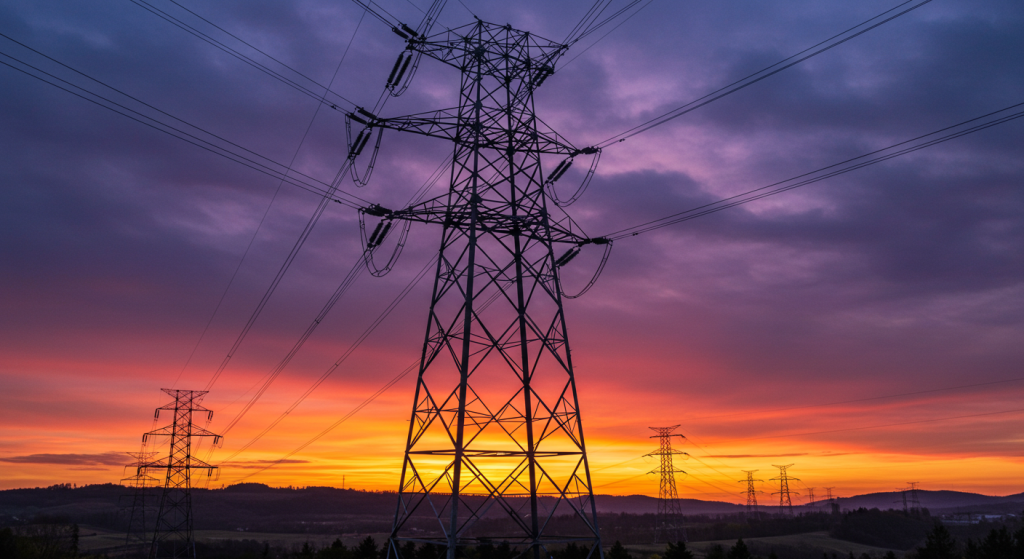High Voltage Transmission Towers: The Backbone of Our Power Grid
2025-04-21
What are the Towers of High Voltage Transmission?
High voltage transmission towers support power lines and are essentially very tall structures. In addition to being known as power line towers, electricity pylons, and even overhead towers of power lines, they serve the very simple purpose of supporting transmission lines. Power generation plants send power to electrical substations that utilize the towers to convert the voltage into more useful levels.
Through the robust design that ensures stability and safety, TRH Designs transmission, extra high voltage (EHV) or ultra high voltage (UHV) towers. disrupt under severe environmental conditions, ranging from 110kV to over 800kV. Bulleting
Common Designs of Transmission Towers
The design (both aesthetically and structurally) of transmission towers is dictated by the wiring, geography, environmental needs, and the impact on the ecosystem. The following are some of the key types:
Steel Lattice Towers
These are the most popular towers in use, as well as the most cost-efficient. These Towers are made from galvanized steel (which makes them light and costlier to maintain). Moreover, it is very easy to construct and use them with tubular steel electrodes, thus increasing the load of the contained line held.
Monopole Towers
Ideal for use when the span is shorter across the area of distribution lines or when in use for mono-supports. These types of tubulars can also be used in areas with traffic congestion, as they are simpler to install.
Guyed Towers
These towers use guy wires for stabilization and perform excellently on soft ground or ground that tends to shift.
Lattice Towers – High Voltage Transmission Towers That are Strong and Reliable
These towers represent the middle of the road option when searching for high voltage transmission towers and are the most reliable due to the strength each tower provides and their low structural weight.
Extremely Suitable for Tough Weather Conditions
Lattice works best when dealing with harsh and wind-snow areas and are as well as seismic zones, thanks to the build made to tackle extreme environments.
Can Be Adjustable and Cost-Efficient
Lastly, costs are optimal when using lattice-shaped towers for the use of anti- and remote systems set far away. This makes them perfect to sustain a baseline for adjustability, all while maintaining long distances with high efficiency.

Important Parts of a Transmission Tower
Every transmission tower has several critical components, including:
• Cross Arms: Conductor spacing is maintained at a reasonable distance.
• Insulators: Protect against electric leakage through the tower.
• Ground Wire (Earth Wire): Protects from lightning.
• Conductor Bundles: Conduct electricity.
• Stockbridge Dampers: Prevent wind-induced vibration.
• Arcing Horns: Lightning or surge voltage is directed away.
Technical Design Parameters
Building a transmission tower is more than constructing it vertically; it is a work of art. Here are some important parameters:
• Sag and Tension Calculations: Achieves proper balance between mechanical structures and distance maintenance
• Right-of-way (ROW): A boundary within vegetation or structures.
• Conductor Clearance: Height above ground, roads, or rivers.
• Wind and Ice Loading: Estimate of the structural loading due to severe weather conditions.
• Corona Discharge: Expenditure of energy is increased if not restrained, especially at smooth surfaces on the conductors.
Uses of Transmission Towers
• Rural Electrification: Long span towers catering for electricity from remote areas.
• Urban Transmission: In cities, use compact towers, which are often monopoles.
• Cross-Country Lines: EHV and UHV towers used in inter-grid connections.
Effects of Transmission Towers on the Environment
The construction and building of these towers are associated with land usage, disruption of wildlife habitats, and EMF (electromagnetic field) exposure. Some of the major issues are:
• Habitat destruction: Mitigated with eco-friendly tower routing.
• Showy pollution: Responsible through design changes.
• EMF issues: New tower designs keep EMF radiation to a minimum.
Governments and utility companies conduct testing of environmental impacts before building these towers.
Steps to Construct and Assemble Towers
To construct high-voltage towers, the following steps are undertaken:
1. Approval of design and site survey
2. Construction of foundation: Deep concrete and anchor bolts
3. Assembling the tower: Bolting and welding of prefabricated steel components at the site
4. Erection by cranes or helicopters
5. Stringing of conductors: Careful and precise application of tension to avoid sagging.
Maintenance & Inspection
Regular maintenance prolongs a system’s life and protects its safety features. These include:
• Visual Inspections
• Drone Surveillance
• Thermal Imaging Detection For Hot Spots
• Monitoring Conductor Sag
• Rust or Corrosion Control
Transmission Tower Technology Innovations
Contemporary towers are becoming smarter and more sturdy while simultaneously reducing their carbon footprint. Key improvements include:
• Composite Insulators: Weather resistant and lighter.
• Smart Monitoring Devices: Real-time monitoring of stress, temperature, and vibration of structures.
• Modular Tower Designs: Easier and quicker to install and relocate.
• High-Temperature Conductors: Existing power lines can transmit more power.
All of these innovations drive down maintenance costs and increase power efficiency.
Transmission Towers: Global Trends & Future
As the global economy shifts to cleaner energy, the use of advanced power infrastructure is rapidly increasing. New developments include:
• HVDC Transmission Towers: Critical for long-range and underwater power lines.
• Hybrid Towers: Support power and telecommunication lines.
• Eco Towers: Redesigning to integrate with the environment and reduce carbon footprint.
What Makes XY Tower Special?
XY Tower is a leader when it comes to the design and construction of high-voltage transmission towers due to our experience with modern energy requirements. We bring to the table decades of experience, global certifications, and state-of-the-art facilities:
• Custom designs of towers such as lattice, tubular, and monopole
• Complete EPC (Engineering, Procurement, Construction) services
• Global shipping with fast lead times
• Eco-conscious Construction standards
High Voltage Transmission Towers – You'll Get Performance Engineering
Reliability, precision, and endurance are paramount in the design of X.Y. Tower high voltage transmission towers, and so they are expertly crafted with those traits in mind. Our specialties lie in the manufacture of high-performance towers that satisfy the requirements of contemporary power transmission networks.
We Use Premium Materials
All our towers are made of top-grade materials such as galvanized steel, ensuring unmatched structural integrity and high resistance to corrosion, regardless of the conditions. This allows them to perform exceptionally well in even the harshest climates, from coastal areas to mountainous terrains.
Easy Maintenance and Installation
Low maintenance, efficient transport, and easy assembly are some features that characterize each transmission tower we craft. Overall, this improves project cost effectiveness and shortens deployment timelines for long and short distance transmission lines.
Timely and Cost-Effective Solutions
We provide fast production and delivery services while maintaining competitive pricing without overly affecting quality. X.Y. Tower provides customized solutions tailored to your grid requirements, be it for suspension towers, angle towers, or dead-end towers.
Global Trust
X.Y. Tower has established itself as a trusted supplier of high-voltage transmission towers. Their performance is consistently reliable, enabling utilities worldwide to transmit energy efficiently, securely, and stably. Request a quote today or contact us to find out more about our transmission tower solutions.
Conclusion
The high-voltage transmission towers stand tall as more than just metal structures. They silently defend the world’s power systems, and modern engineering combined with eco-friendly thinking makes them essential in today’s world. Whether you intend to plan a national energy grid, upgrade infrastructure, or research modern tower technology, understanding the towers is vital. With the latest innovations and global benchmarks, the coming years will see smarter, taller, and greener solutions to power transmission.

Hey, I’m Chunjian Shu
"X.Y. Tower: Reliable, innovative solutions for high-quality towers and electrical equipment with professional service.
